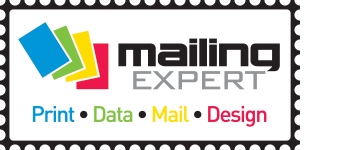The font of all knowledge? Fancy fonts and web safe fonts
As promised in Part 1 of this series, this blog post will address the issues and opportunities generated by the use of fancy fonts.
Fancy fonts are fun!
There are literally thousands of fonts to choose from these days, some of them completely free to download, some of them requiring a licence. In fact, it would be quite easy to drown in a sea of fonts that are now available and it’s for that reason that many people stick to what they know. However, with careful thought, it’s not necessary to be over-cautious. Success may come to those who are prepared to go that little bit further to find something out of the ordinary in order to make their brand stand out from the crowd.
Even the names suggest a sense of fun and originality. Here are some of our favourites:
- Bleeding Cowboy – if you know Uckfield, this was used on the shop front and website of Elysium Engraving
- Ecofont – actually takes regular fonts and fills them full of holes so less ink is used when printing!
- Charcuterie Ornaments – “homage to the inventiveness, passion, and care of peasants” – apparently.
- Doctor Cosmicucumber – the less said the better…
They certainly raise a smile in a world which can be dull and monotonous.
Web safe fonts – myth or reality?
Thinking about websites, in years gone by, only a few so-called “web safe” fonts could be used, because it was impossible to see a fancy font on a computer which hadn’t already got it installed. A default font would appear instead. This meant that all text on the internet looked pretty much the same.
One of the ways round this was to replace written text with an image of the writing, such as a .jpg. Such a clunky solution! It looked sloppy, considerably slowed download time and was a sure way to deter anyone from bothering with your website.
Without getting too technical, in these enlightened days there are a number of developments which allow an astonishing array of fonts to work well across the whole array of digital media. CDNs (Content Delivery Networks), such as Google Fonts or Typekit, do exactly what is required, freely delivering content like fancy fonts to consumers.
This aside, it’s still important to test your font choice to make sure it performs well across different environments. For example, email coding is not yet that adventurous, so sticking to tried and tested fonts in that medium is probably best.
Consider legibility
Not all fonts have been designed with legibility in mind. They’re simply created to make a bold typographic statement and not intended for large chunks of text. If you choose something that is too overpowering, it may distract people from your message – they’ll be too busy admiring (or hating!) the typeface instead.
Especially where websites are concerned, it’s best to use highly fancy fonts only for decorative purposes or for headlines. They’re a great way to get attention. For the body of your text, restrained is better because it’s easy to read. For print purposes, it’s slightly less of an issue because people dwell for longer upon cards, flyers, letters and brochures. However, legibility must still be a paramount consideration.
A combination of different fonts may be effective but we all have to be careful not to create a mish-mash that’s confusing to the eye. Fonts come in families, so you could use variations of one typeface to make the final result more cohesive.
Interesting research about fancy fonts
To round up this blog, we’ve been fascinated to read some work undertaken by neuroscientists Hyunjin Song and Norbert Schwarz of the University of Michigan. They have discovered that, in certain circumstances, using harder-to-read fancy fonts can be a positive, even though it slows down the reading process. Apparently, it suggests to a consumer that more effort and skill is needed to create the product or service. They used restaurant menus as an example, presenting subjects with the same menus – one printed in fancy and one in simple font. The skills needed by the chefs to produce the food on the fancy font menu were rated much higher than for those on the simple menu – hence, higher prices could be justified!
It’s always a balancing act, isn’t it? Overdo this idea with your own marketing material and people may not bother to struggle through it, which they would as a captive audience reading a menu in a restaurant.
Here at Mailing Expert, we can help you to design material using appropriate fonts to make the end results both compelling AND legible.
This is the second of a two-part series on the importance of choosing the right font for your marketing materials. The first part is all about choosing the best font for your marketing materials, and is available to read right now!

